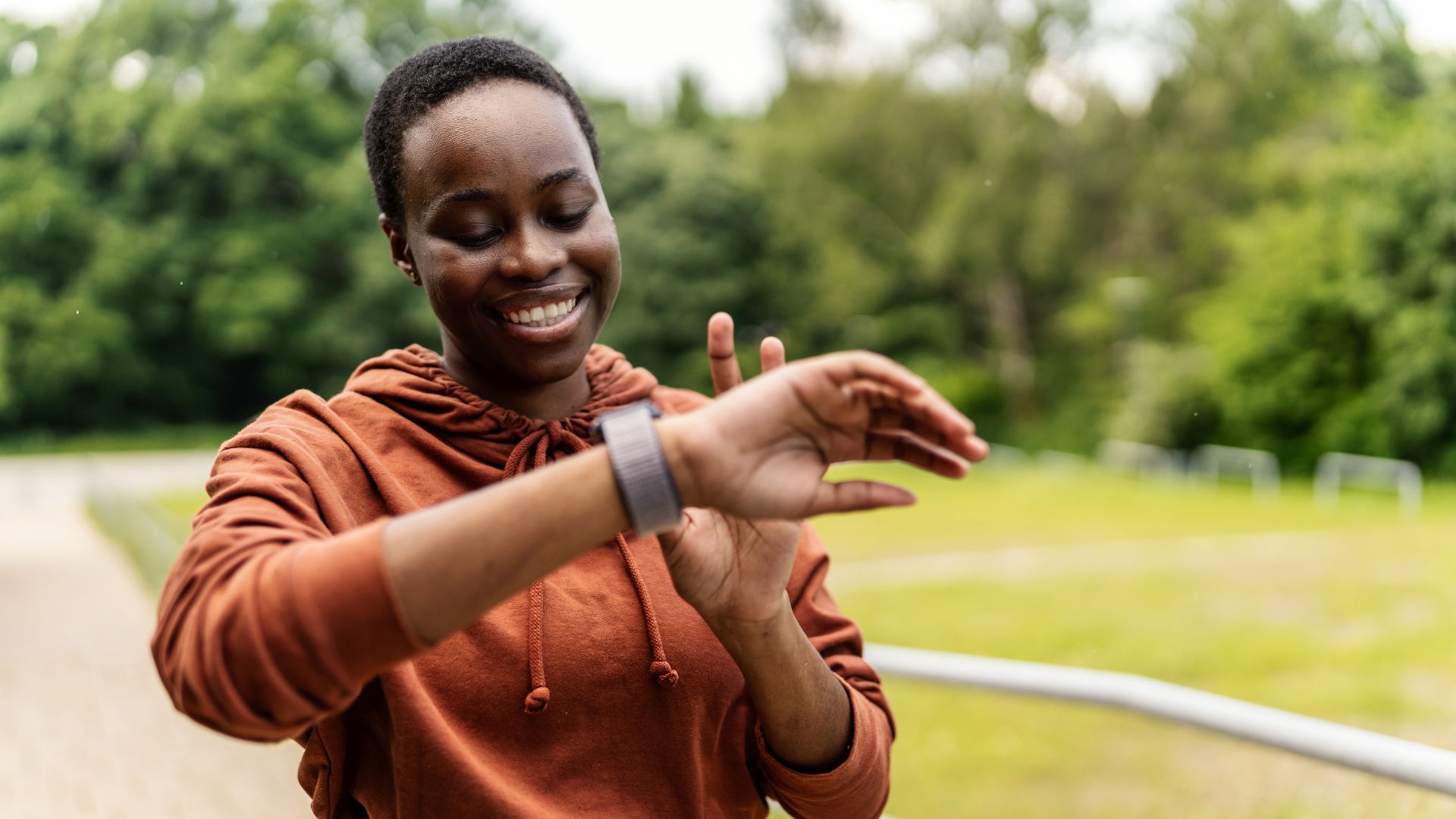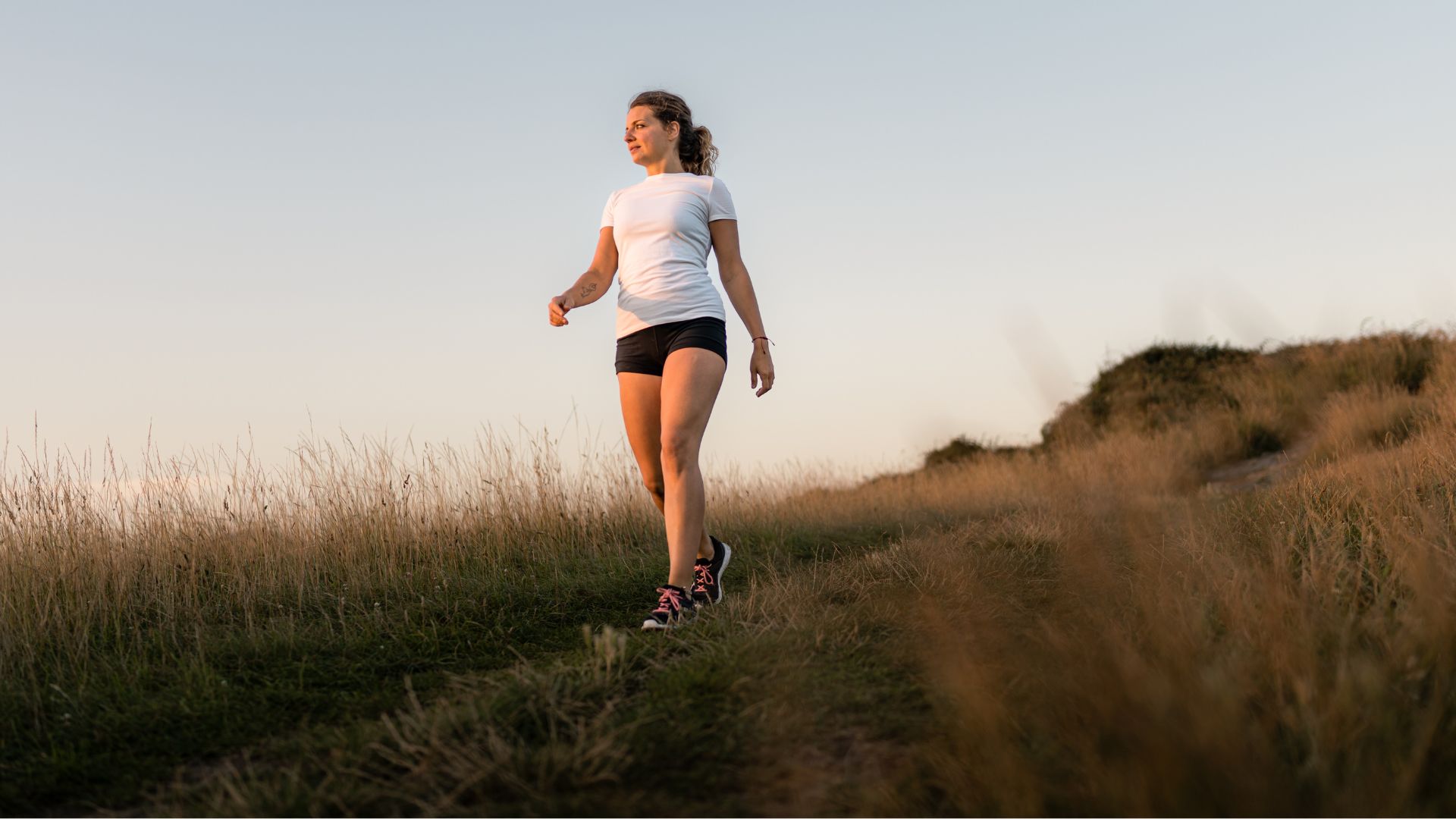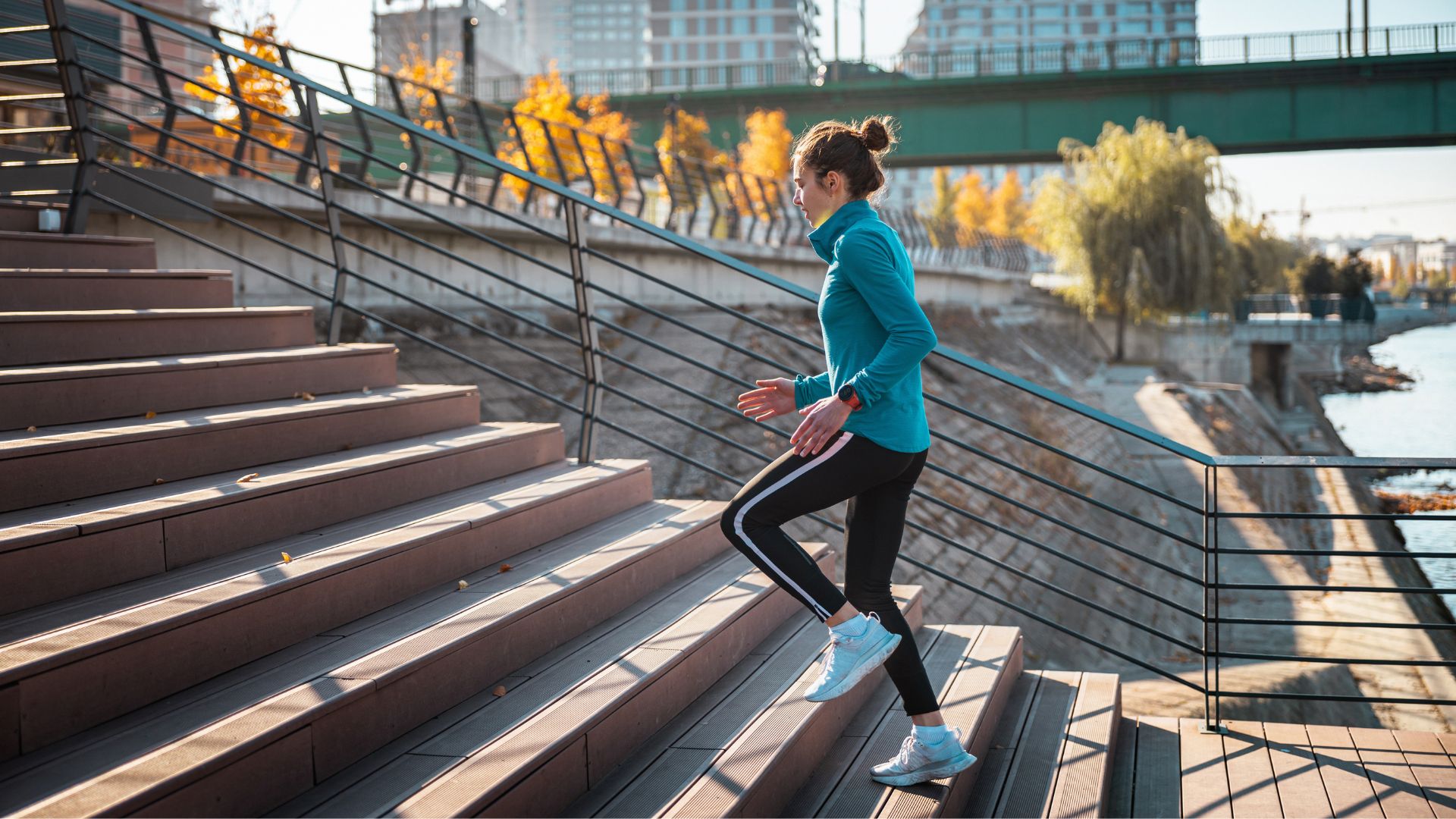
Many people think you have to be out of breath, sweating and struggling to improve your cardiovascular health - but that's not true. As fun as running, cycling, and swimming can be, they are options, rather than 'must-dos'. Walking as a workout is just as beneficial.
Pulling on your walking shoes and heading outside also has dozens of mental health benefits, including socialising opportunities and exposure to green spaces, which have been proven to boost mental wellbeing, reduce anxiety, and ease symptoms of depression.
"Out of all the medical and lifestyle interventions we can use to improve our quality of life and prevent chronic diseases, regular physical activity is by far the most potent tool, says Dr Philip Borg, a board-certified longevity specialist and founder of The Longevity Doctor. Walking is one example of these activities.
You'll need to do more than a gentle stroll most days to reap the benefits of walking, though. Here, woman&home speaks to several cardio specialists, personal trainers, and doctors to reveal all you need to know about walking as a workout outside. If you're looking to exercise indoors, you'll want advice on indoor walking workouts instead.
Why you should try walking as a workout
1. Suitable for all fitness levels
Walking is something that most people will be able to do, regardless of fitness level. You don't need any prior exercise experience to step outdoors and head out on a walk.
Whether you walk 30 minutes a day or just 10 to begin with, daily walking has been shown to assist with healthy ageing and improve health outcomes "in all populations", according to research published in the GeroScience Journal.
This is because it's a low-impact exercise, explains Eryn Barber, MSc, a strength and conditioning specialist who works with The Fitness Group. "This means it's gentle on the joints, which is especially important for those who may be carrying extra weight or dealing with past injuries," she says.
"Plus, it’s easy to build up gradually. You can start with short, slow walks and naturally increase time, distance or pace as your fitness improves . Walking is also easy to stick with, which is key to building a lasting habit," she says.
2. Builds strength
Many people don't think walking builds muscle as it's a cardio exercise, but that's a myth, says Aimee Victoria Long, a certified personal trainer and cardio specialist.
"It's actually doing lots more than people realise," she says. "Walking is a weight-bearing movement, so it naturally works the muscles in your legs, glutes, and core, especially if you're walking with good posture and a bit of pace."
When you add in hills or resistance (like wearing a weighted vest for walking), you can build strength, stability, and endurance without needing a gym, she adds.
As studies show that women tend to lose muscle strength and power in menopause, walking is one go-to exercise requiring little equipment, expense, or prior fitness level to help prevent discomfort and conditions like osteoporosis later in life.
In an ideal world, this would be combined with some kind of strength training, like lifting weights or Pilates with weights in a regular routine.

3. Helps with weight loss
Walking has been called one of the "ideal" exercises for weight loss by doctors, including Lorraine's Dr Hilary Jones, for good reason. "It's a good way to burn calories efficiently," he said on the show. "You're using more oxygen, and that oxygen is burning fat."
The key to losing weight is consistency in diet and exercise routine. Walking for weight loss tends to be less intense than other cardio activities, meaning you're more likely to stick to it when tired.
It's also easier to fit walking into a daily routine when you're busy, compared to running for weight loss, for example. You can get your steps in throughout the day in exercise snacks if you're strapped for time, rather than having to set aside dedicated time.
If you are looking to lose weight, talk to your doctor before starting any new exercise routine.
4. Good for our mental health
Walking is particularly beneficial for relieving stress and anxiety, with a study published in the Brazilian Journal of Physical Therapy showing that racking up 10,000 steps a day can "significantly lower anxiety, depression, anger, fatigue, confusion, and total mood distress scores". Even if you can't reach this threshold, other research shows that any walking - even as little as 10 minutes, according to a study by the University of Mississippi - makes a big difference.
Plus, fresh air and time away from screens are always essential, with many working from home or spending the day indoors.
But it goes even deeper than this, says Dr Borg. Walking can also improve your cognitive function, making it one of the best exercises for longevity. "It increases brain-derived neurotrophic factor (BDNF) and promotes brain health and cognitive function, and potentially reduces the risk of dementia," he adds.
BDNF is a brain protein that helps neurons survive and grow, impacting vital processes from memory to appetite regulation.
The best walking workouts
As Dr Borg says, if you're looking to do walking as a workout, you need to be in Zone 2. One way to make sure you're hitting this essential target is to wear one of the best fitness trackers, "such as a WHOOP or Oura Ring", he says.
Sitting among the best fitness trackers, these devices monitor your heart rate and display your working level during your exercise session.
To get the benefit of walking as a workout, you'll need to pick up the pace. "Zone 2 training is a workout done at moderate intensity at a steady pace," says Dr Borg. "This is when you're in 60 to 70% of your maximum heart rate."
You'll know you're at this level when you're slightly out of breath while walking, but still able to maintain a conversation.
1. Walking with weights
Pick up your ankle weights for walking or carry some dumbbells with you and combine strength training with cardio exercise in this workout, created by PT Long. "This one's great if you want to layer on some strength benefits while still keeping it low-impact," she says.
- 5-minute warm-up walk, no weights
- Strap on a weighted vest or grab light hand weights
- 15 to 20 min walk with good posture, core switched on
- Every 3 to 5 minutes, pause for a few bodyweight exercises (think walking lunges, squats, or even suitcase carries if using dumbbells)
- 5 min cool down, no weights
A weighted vest is a great way to include more strength training in your walking. It wraps securely around your chest, has pockets for essentials, and comes in resistances from 6lb (2.7kg) to 20lb (9kg).
Ankle weights are another easy way to add some resistance into your walking workout. These simple wrap-around weights come in increments up to 2kg, helping you increase your strength and stability slowly.
Dr Borg recommends WHOOP and the Oura Ring, and I recommend the Fitbit Charge 6. As the newest Fitbit, it has 60% better heart rate monitoring than previous models, making it a reliable way to monitor your heart rate during walking workouts and make sure you're in the right zone.
2. Interval walking
An interval workout, which switches between periods of walking and rest with higher and lower intensities, may be preferable if you tend to get bored when you're walking. It's also one of the best ways to boost your cardiovascular fitness.
Try this interval walking workout outdoors:
- Walk for 5 minutes to warm up, starting with an easy pace before graduating to a moderate pace.
- Your first interval is a 30-second burst of high-intensity walking. Make sure to bend your arms and pump them as you move, taking quicker steps to propel yourself along. It should feel a lot harder than the warm up.
- Rest for 30 seconds, returning to the moderate pace in the warm up for 2.5 minutes.
- Repeat the 30-second bursts and rests at least 10 times, before cooling down with a 5-minute walk. This works out to 20 minutes of walking, which is a great starting point for beginners.
3. Alternative terrain walking
Walking on alternative terrains, such as trails, gravel, or grass, will make your muscles work harder than they would walking on the pavement as you'll have to maintain your stability, as well as your pace and intensity.
How to do an alternative terrain walking workout:
- Plan your route: Walking as a workout on alternative terrain requires you to have a route. Download one of the best walking apps to get started, such as AllTrails or GoJaunty, and plan ahead of time. That way, you know where you're going.
- Wear the right footwear: While trainers will be fine in the gym, on the trails, it's always better to keep your feet supported with a proper pair of walking or running shoes.
- Remember to take water: Going on a hike requires more preparation than most other walks. Make sure to take supplies with you, such as water, snacks, a First Aid kit, and spare layers in case the weather changes.

4. Incline walking
To do a full lower-body walking workout, you'll have to add an incline. Walking uphill activates all the same muscles as walking on a flat surface - such as the glutes (buttocks), quadriceps (thighs), and hamstrings (back of thighs) - but also recruits small ones in the legs. This can help boost strength, stability, and balance even more.
How to do an incline walking workout on stairs:
- Walk six flights of stairs (around 60 steps, repeating if you can’t find a tall enough set of stairs).
- Next, walk down, then jump on and off the last stair for 1 min.
- Then, walk four flights of stairs, missing out one stair on each step, then walk down.
- Form a plank with hands placed on the bottom step and perform mountain climbers for 45 seconds.
- Walk up three flights, alternating between hopping up for three steps (hold on to the handrail) and walking up three steps.
5. Power walking workout
Power walking is one of the most popular walking workouts. If you're looking to increase the number of calories burned walking, this is one way to do it. You can do power walking with ankle weights or without - both will help to boost your muscles' strength and endurance, and improve your balance and walking gait.
The easiest way to do this workout will be on a hill, but if you're new to walking, try it on flat ground first. You will need a fitness tracker for this as you'll need to measure your pace.
As a guide, 2 to 3mph is moderate and 6 to 6.5mph is very fast. The exercises are mostly self-explanatory, but just in case, a farmer’s walk consists of short and quick steps with weights on your ankles.
How to do a power walking workout:
- Walk 20 mins (moderate/2-3mph, increasing by 1mph every week)
- Single-leg calf raises x 20
- Farmer’s walk with ankle weights x 30 secs
- Jumping lunges x 20
- Bridges with an exercise band around knees x 20







